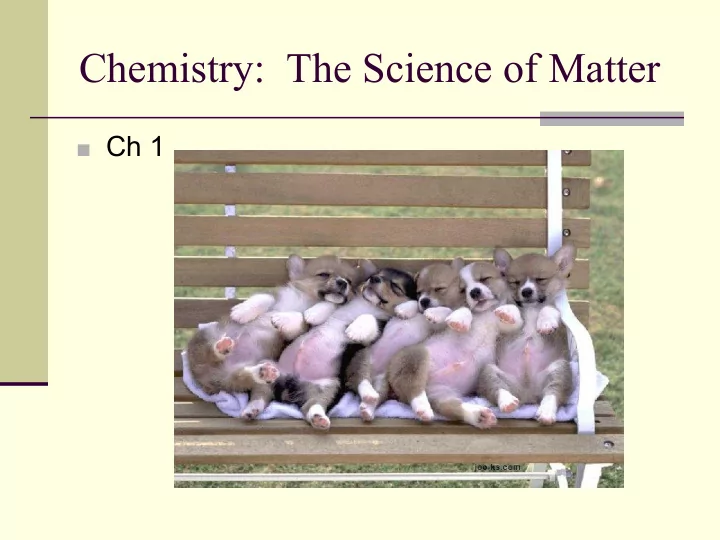

Clues that a chemical change has occurred 1. Gas is produced ■ ■ CO 2 – flame is extinguished! ■ O 2 – flame is reignited ■ H 2 – “pop” 2. Light is produced ■ ■ Magnesium + oxygen → 3. Temperature change ■ Calcium + hydrochloric acid → calcium chloride + hydrogen gas ■ 4. Color change (not normal!) ■ Lead nitrate + potassium iodide → lead iodide (ppt) + potassium nitrate ■ 5. Precipitate formed ■ ■ See above 6. Odor changes ■ ■ Barium hydroxide + ammonium chloride → ammonium hydroxide and barium chloride
Energy changes ■ Exothermic ■ Give off heat energy (feels hot) ■ Dynamite-explosion of nitroglycerin ■ Endothermic ■ Absorb heat energy (feels cold) ■ photosynthesis
Burning a log A. Exothermic B. Endothermic
Law of conservation of Mass ■ In a chemical change, matter is neither created nor destroyed ■ Atoms do not disappear ■ The amount of mass at the beginning of the chemical change must equal the amount of mass at the end of the chemical change
In the procedure shown above, a calcium chloride solution is ■ mixed with a sodium sulfate solution to create the products shown. Which of the following is illustrated ■ by this activity? F The law of conservation of mass ■ G The theory of thermal equilibrium ■ H The law of conservation of momentum ■ J The theory of covalent bonding ■
■ When 50 mL of isopropyl alcohol (39.5 g) is added to 50 mL of water (50 g), the mixture will have a volume of 98 mL. What is the mass in grams of this mixture? Record and bubble in your answer to the nearest tenth on the answer document.
Copper (Cu) and sulfur (S) were heated in a covered container. After the reaction was complete, the unreacted sulfur was removed. The table contains the results of the investigation. How much sulfur, in grams, failed to react with the copper? Record and bubble in your answer to the nearest hundredth on the answer document. Copper (Cu) and sulfur (S) were heated in a covered container. After the reaction was complete, the unreacted sulfur was removed. The table contains the results of the investigation. How much sulfur, in grams, failed to react with the copper? Record and bubble in your answer to the nearest hundredth on the answer document.
■ If all the reactants in a chemical reaction are completely used, which of the following ■ statements accurately describes the relationship between the reactants and the ■ products? ■ F The products must have a different physical state than the reactants. ■ G The total mass of the reactants must equal the total mass of the products. ■ H The reactants must contain more complex molecules than the products do. ■ J The density of the reactants must equal the density of the products.
■ When 127 g of copper reacts with 32 g of oxygen gas to form copper (II) oxide, no copper or oxygen is left over. How much copper (II) oxide is produced? ■ F 32 g ■ G 95 g ■ H 127 g
■ According to the law of conservation of mass, how much zinc was present in the zinc carbonate? ■ A 40 g ■ B 88 g ■ C 104 g ■ D 256 g
Physical or Chemical property??
Baking Soda is a white powder A. Physical property B. Chemical property
Fluorine is a highly reactive element. A. Physical property B. Chemical property
Aluminum bends easily A. Physical property B. Chemical property
Physical or Chemical Change?
A pan of water boils on the stove. A. Physical change B. Chemical change
A match lights when struck. A. Physical change B. Chemical change
Ice cream melts A. Physical Change B. B. Chemical Change
Sodium reacts with water A. Physical Change B. Chemical Change
Recommend
More recommend